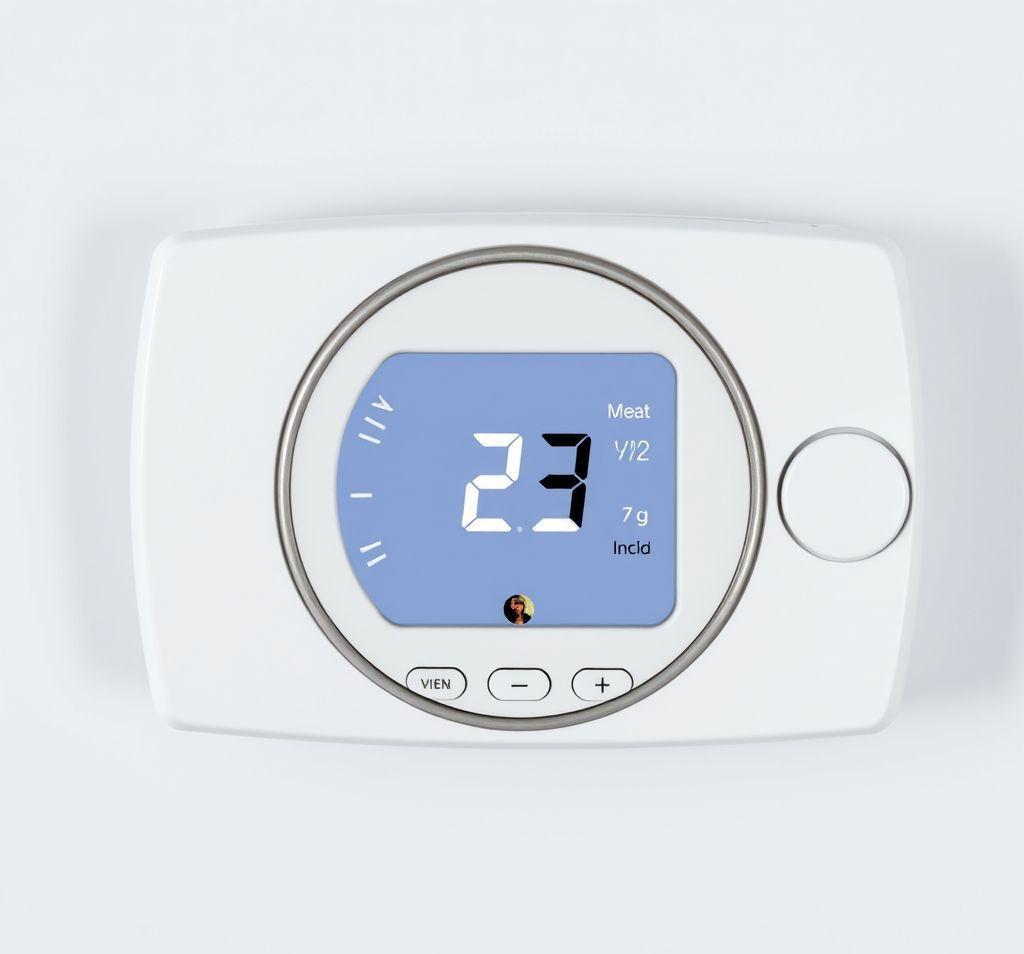Learning vs. Programmable vs. Wi-Fi Enabled Smart Thermostats: Which is Best?
Learning vs. Programmable vs. Wi-Fi Enabled Smart Thermostats: Which Type is Best for Your Lifestyle and Home?
Smart thermostats offer unprecedented control over your home's heating and cooling, promising energy savings and increased comfort. But with a variety of options available, choosing the right one can feel overwhelming. This article breaks down the core differences, pros, and cons of learning, programmable, and Wi-Fi enabled thermostats to help you make an informed decision based on your technical comfort and desired level of automation.
Understanding the Core Differences
The primary distinction between these thermostat types lies in their level of automation and adaptability.
- Programmable Thermostats: These are the most basic type, allowing you to set pre-defined schedules for different times of the day and days of the week. You manually program the temperature you want at specific times.
- Wi-Fi Enabled Thermostats: These thermostats connect to your home's Wi-Fi network, enabling remote control via a smartphone app or web interface. They often offer features like energy usage monitoring and integration with other smart home devices. While they can be programmed, their strength lies in the convenience of remote access.
- Learning Thermostats: These are the most advanced, using algorithms and sensors to "learn" your heating and cooling preferences over time. They automatically adjust the temperature based on your habits, occupancy, and even external weather conditions, aiming to optimize comfort and energy efficiency without requiring manual programming.
Programmable Thermostats: Simple and Budget-Friendly
Programmable thermostats are a great entry point into smart temperature control. They allow you to create a heating and cooling schedule that matches your routine. For instance, you can set the thermostat to lower the temperature while you're at work and raise it again before you return home.
Pros:
- Affordable: Generally the least expensive option.
- Easy to Install: Most models are relatively simple to install, often requiring only basic wiring knowledge.
- Energy Savings: By setting a schedule, you can avoid heating or cooling an empty house, leading to potential energy savings.
Cons:
- Manual Programming: Requires manual input and adjustments to the schedule, which can be time-consuming.
- Inflexible: Doesn't adapt well to unexpected changes in your schedule (e.g., staying home sick).
- Limited Features: Typically lacks advanced features like remote control or energy monitoring.
Wi-Fi Enabled Thermostats: Remote Control and Connectivity
Wi-Fi enabled thermostats offer the convenience of controlling your home's temperature from anywhere with an internet connection. Using a smartphone app, you can adjust the temperature, view energy usage reports, and even receive alerts if the temperature deviates from your desired range.
Pros:
- Remote Control: Adjust the temperature from anywhere using a smartphone or tablet.
- Energy Monitoring: Track your energy consumption and identify potential savings opportunities.
- Smart Home Integration: Often compatible with other smart home devices like Amazon Alexa or Google Assistant.
- Geofencing: Some models offer geofencing capabilities, which automatically adjust the temperature based on your location.
Cons:
- Higher Cost: More expensive than programmable thermostats.
- Requires Wi-Fi: Reliant on a stable Wi-Fi connection for remote control and other features.
- Security Concerns: Like all connected devices, they are susceptible to potential security vulnerabilities. It's crucial to use strong passwords and keep the firmware updated.
Learning Thermostats: Intelligent Automation
Learning thermostats represent the pinnacle of smart temperature control. They go beyond simple scheduling by analyzing your behavior and automatically adjusting the temperature to optimize comfort and energy efficiency. Over time, they learn when you're typically home, asleep, or away, and adjust the temperature accordingly. They also use sensor data to determine if a room is occupied, and make adjustment as needed. Advanced models even incorporate weather forecasts to anticipate temperature changes.
Pros:
- Automatic Optimization: Learns your preferences and automatically adjusts the temperature for optimal comfort and energy savings.
- Hands-Free Operation: Requires minimal manual programming.
- Advanced Features: Often includes features like occupancy detection, weather integration, and energy reports.
Cons:
- Highest Cost: The most expensive type of smart thermostat.
- Learning Period: Requires a learning period (typically a week or two) to accurately understand your habits.
- May Not Suit Irregular Schedules: Works best for households with relatively consistent routines. Erratic schedules can confuse the learning algorithms.
Choosing the Right Thermostat for You
The best thermostat for your home depends on your individual needs, technical comfort, and budget.
- For Budget-Conscious Users with Regular Schedules: A programmable thermostat offers a simple and affordable way to save energy.
- For Tech-Savvy Users Who Want Remote Control: A Wi-Fi enabled thermostat provides the convenience of controlling your temperature from anywhere.
- For Users Seeking Maximum Automation and Energy Savings: A learning thermostat offers intelligent automation and optimized energy efficiency, but comes at a higher price.
Consider your daily routine, technical expertise, and desired level of control when making your decision. Research specific models within each category to compare features and find the best fit for your needs.
Conclusion
Navigating the world of smart thermostats doesn't have to be complicated. Programmable thermostats offer basic scheduling, Wi-Fi enabled thermostats bring remote control, and learning thermostats provide intelligent automation. By understanding the core differences, pros, and cons of each type, you can confidently choose the thermostat that best aligns with your lifestyle, technical abilities, and budget, ultimately creating a more comfortable and energy-efficient home.



